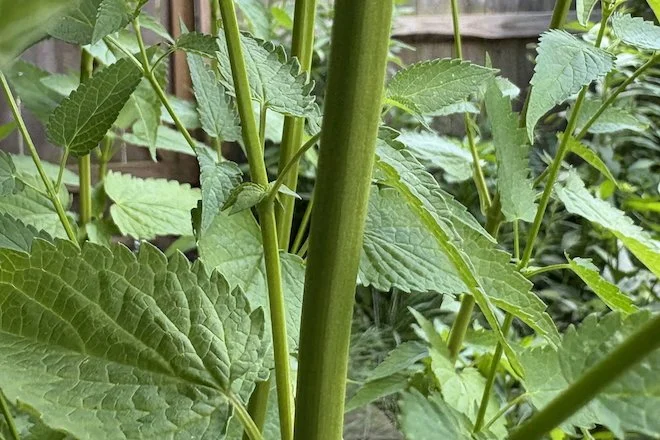This week: Anise Hyssop, a Worthy Mint!
Hello!
If you like the look of Lavenders and Catmints in the garden, but don’t love that they aren’t native, try Anise Hyssop (Agastache foeniculum) instead. They are similar in that Anise Hyssop features fragrant, spire-like purple flowers that attract a ton of pollinators, including bees and hummingbirds.

While it is primarily known as a prairie flower native to the Midwest, Anise Hyssop is also native to southwestern Pennsylvania. It tolerates both partial shade and full sun and grows three to four feet tall, but can be cut back by half in June to create a shorter plant. It is also long-blooming. Mine begins flowering in June and will continue to bloom throughout the summer.
Family Fun Facts
Anise Hyssop is a member of the Lamiaceae family, also known as the mints. Mint family members typically have square stems, fragrant leaves when crushed, and opposite leaves. Anise Hyssop’s square stems are especially pronounced, and the fragrance has a minty licorice-like essence that is used in teas and has medicinal properties. Other native mints include Mountain Mint, Bee Balm, Obedient Plant, and Downy Scullcap.

Other qualities shared by mint family members? Mints tend to spread in the garden, and Anise Hyssop is no different. It will reseed and multiply via rhizome. Deer also find many mints unpalatable; this is bad news for them, but great news for us.
Elsewhere:
It’s lightning bug season! They’re all over my garden, and hopefully yours too. This podcast from In Defense of Plants explores the relationship between fireflies (their word, not mine) and plants. It’s worth a listen!
Have a good week,
Julie